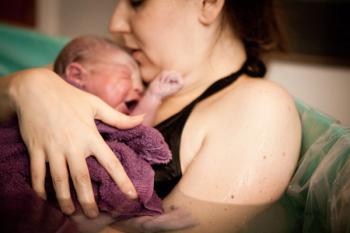
Postpartum hemorrhage linked to long-term heart and blood clot risks
A new study finds women with postpartum hemorrhage face significantly higher odds of cardiovascular disease and thromboembolism for up to 15 years after childbirth.
The odds of cardiovascular disease (CVD) and thromboembolism disease are significantly increased in patients with postpartum hemorrhage (PPH), according to a recent study published in The Journal of Maternal-Fetal & Neonatal Medicine on June 25, 2025.1
Increased cardiovascular and thromboembolism risk
The data included over 9.7 million women and found a 1.76-fold increased risk of cardiovascular conditions in PPH patients, alongside a 2.10-fold increased risk of thromboembolic incidents. Additionally, this risk could persist for up to 15 years after birth, highlighting long-term effects.
“PPH has long been seen as an emergency that ends once the bleeding stops. But our findings show it may have lasting effects on a woman’s heart health, even years after childbirth,” said Manggala Pasca Wardhana, MD, from Airlangga University.
Assessing outcomes of PPH
Investigators conducted the study to determine the association of PPH with long-term CVD and thromboembolism risks.2 Studies published through August 15, 2024, were identified through systematic searches of the PubMed and Web of Science databases.
Original research articles with full-text available about over 10 women with documented PPH and reporting cardiovascular outcomes were included in the analysis. Exclusion criteria included having a follow-up below 1 year.
There were 10 studies included in the final review, with sample sizes ranging from 32,463 to 4,243,393 participants. These patients resided in South Korea, the United Kingdom, Sweden, France, Canada, and the United States, and received 3 to 31 years of follow-up. Most studies utilized International Classification of Diseases coding to identify PPH and cardiovascular outcomes.
Findings on cardiovascular disease risk
While 2 of the included studies did not report an association between PPH and CVD, others identified significant correlations. In one trial, 39.2% of CVD patients presented with PPH. Additionally, an adjusted odds ratio (OR) of 5.07 was reported for cardiac arrest in PPH patients, highlighting an over 5-fold increased risk.
In another study, an over 2-fold increased risk of acute myocardial infarction was reported in patients with PPH. Additionally, when assessing long-term risk, researchers found the odds of CVD were increased 29% within 15 years after giving birth, with a nearly 2-fold increased risk in the first year after giving birth.
Women with PPH also had slightly increased odds of cardiovascular hospitalization, with an adjusted hazard ratio (AHR) of 1.02. The AHR rose to 1.47 in women with PPH needing a blood transfusion, highlighting a much higher risk. In a meta-analysis of 6 studies, the pooled OR of CVD was 1.76 among women with PPH.
Thromboembolism risk and recommendations
Similarly, a pooled OR of 2.58 was reported for thromboembolism in a large cohort study. Additionally, research found that while PPH was not an independent risk factor for venous thromboembolism, the risk of this condition was increased 2.9-fold in women with PPH. In a meta-analysis of 4 studies, the pooled OR for thromboembolism in PPH patients was 2.10.
These results indicated significant long-term increases in CVD and thromboembolism risk in women with PPH. Investigators recommended proactive postpartum care and long-term follow-up to reduce these risks.
“If policymakers take this into account, it could lead to meaningful changes. For example, women who experience severe bleeding could be offered routine cardiovascular check-ups as part of their postpartum care,” said Pasca Wardhana.1
References
- Large global study links severe bleeding after childbirth to increased risk of cardiovascular disease. Taylor & Francis Group. June 25, 2025. Accessed June 27, 2025. https://www.eurekalert.org/news-releases/1088329?
- Faizara Ustadi F, Dhiana Paramita A, Adinda Roswinbila C, Oktavian P, Pasca Wardhana M. Postpartum hemorrhage and long-term cardiovascular disease risk: a comprehensive systematic review and meta-analysis. The Journal of Maternal-Fetal & Neonatal Medicine. 2025. doi:10.1080/14767058.2025.2507103
Newsletter
Get the latest clinical updates, case studies, and expert commentary in obstetric and gynecologic care. Sign up now to stay informed.















